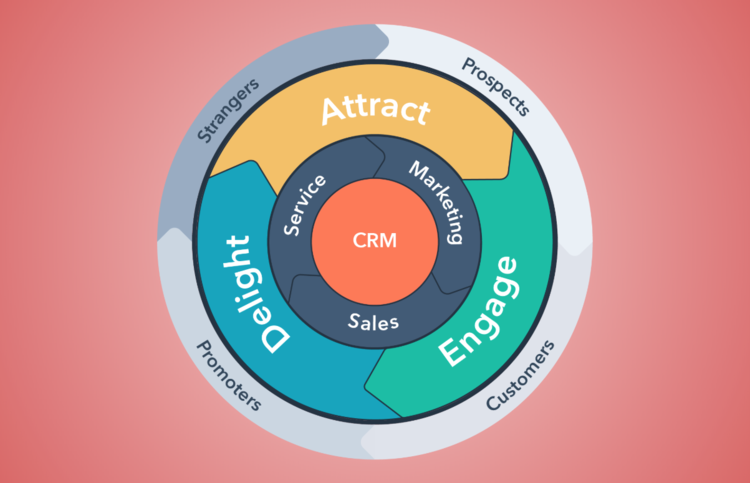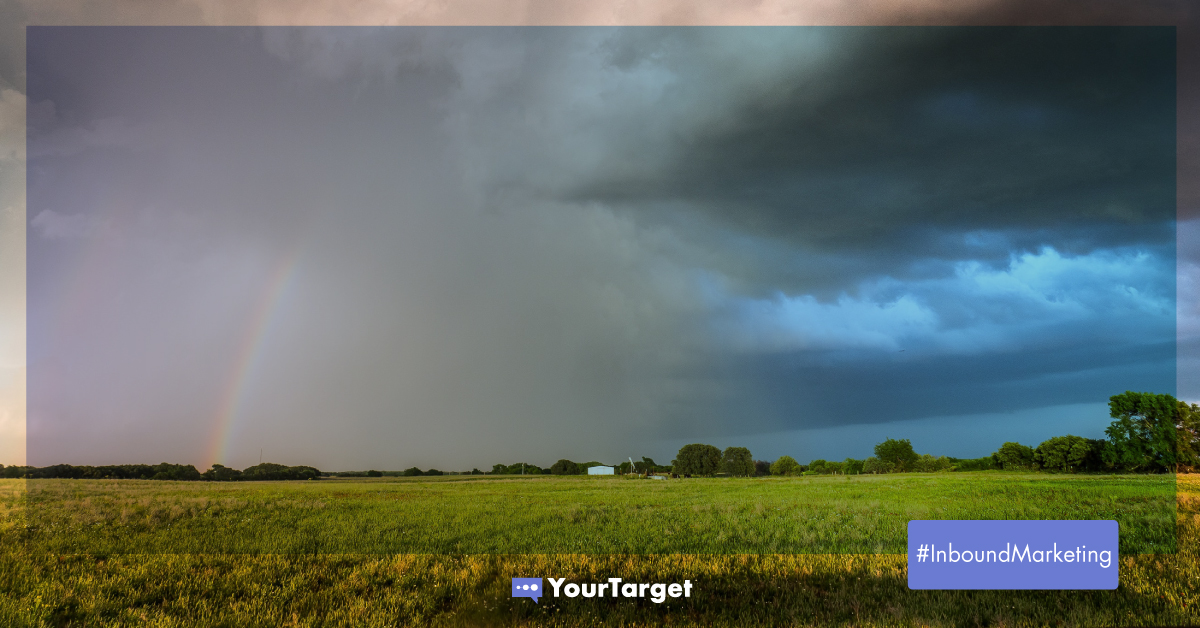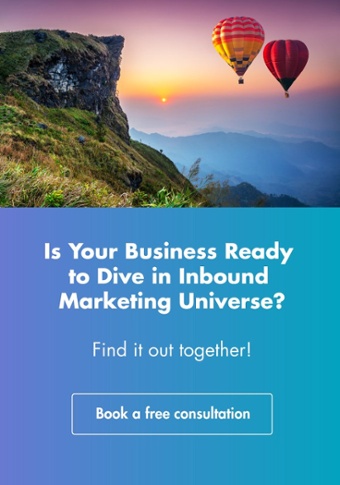The marketing world is filled with nuanced jargon that can be challenging to wrap your head around. Digital marketing, inbound marketing, content marketing, search engine optimization, social media marketing—the list goes on! They all kind of mean the same thing, right? Not quite. In this article, we’ll discuss two of the most commonly confused terms in the marketing world: digital marketing and inbound marketing. Let’s go!
What is Digital Marketing?
Digital marketing is a broad term that includes a range of marketing tactics that are carried out via digital mediums.
A core principle at the heart of any kind of marketing strategy is that it’s about connecting with your audience, right? It’s very much a “right place, right time” type situation.
In today’s digital world, people are spending an increasing amount of time connected to the internet. In fact, smart devices mean we’re basically connected all the time. So, for businesses to reach their audience where they’re already spending a lot of their time, they need to take their marketing efforts digital.
Digital marketing includes everything from social media campaigns to search engine optimization, to website banners. These are all examples of digital marketing techniques, but on their own, they don’t imply any kind of strategy. In this way, digital marketing can be thought of as all the tools that you might use to increase your visibility online.
What is Inbound Marketing?
Where digital marketing is an umbrella term that includes a variety of inbound and outbound marketing tactics conducted via digital devices, inbound marketing is a methodology.
So what is the inbound methodology?
Coined by Hubspot, inbound marketing is about growing your business by cultivating long-lasting relationships with customers. It’s about generating high-quality leads and nurturing them through the inbound marketing funnel. Fundamentally, it’s about attracting, engaging, and delighting customers with a customer experience that’s tailored to them.
Inbound marketers focus on implementing a cohesive long-term strategy that fuels growth by converting leads organically, sharing valuable content, and providing a personalized customer experience.
Inbound marketing is the primary marketing approach for 74% of marketers around the world. Why? Because, when it comes to lead generation, it’s 10x more effective than outbound marketing tactics.

Key Differences
Outbound digital tactics focus on getting a message seen by as many people as possible, whether they wanted to see it or not. For instance, a banner promoting a product or service at the top of a webpage might reach a lot of people but those people don’t necessarily want to see it! 91% of consumers agree that digital marketing tactics have become a lot more aggressive in the past few years. It’s no surprise then, that ad blocker tools have become pretty popular.
Alternatively, marketers who use inbound digital marketing tactics care more about creating valuable, relevant, and personalized content for their viewers. An example of an inbound digital marketing tactic is a blog. One of the most popular types of content used by marketers, company blogs are a great way to provide value and engage with your audience.
So what’s the easiest way to get your head around the difference between digital and inbound marketing? Digital marketing is an umbrella term that describes all kinds of online marketing tactics, whether they’re outbound or inbound. Inbound marketing is a methodology that utilizes digital marketing tools and assets to attract, engage, and delight prospects and customers.
Inbound Vs Traditional Marketing: How Do They Compare?
You might be wondering how the inbound methodology is different from that of traditional marketing. After all, aren’t they both focused on making sales? Sure, that’s part of it—but it’s much more complicated than that.
What comes to mind when you think about traditional marketing? Billboards? Print ads in magazines? Blaring television ads interrupting your favorite TV show? Traditional marketing is all about reaching the most customers to spark their interest, however, it’s not reliable, and—quite frankly—people don’t care for it much these days.
Companies that adopt the inbound methodology will try to convert customers organically and nurture leads and customer relationships with valuable content that addresses the needs, desires, and problems of their target audience.
An inbound strategy takes place online, which means there are plenty of ways brands can reach their audience, including email marketing, search engines, and social media.
An easy way to think about this is that traditional marketing is company-focused, whereas inbound techniques are customer-focused. We’ve talked about what inbound marketing is, now you’re itching to see some proof about how it can grow your business, aren’t you? We thought so.
The case for inbound: What do the statistics say?
Sometimes it’s better to let the numbers do the talking. The following statistics show the impact adopting an inbound methodology can have on your marketing efforts, customer retention, and business growth.
- 41% of marketers confirm inbound produces measurable ROI. (Invespcro)
- 70% of marketers are actively investing in content marketing. (HubSpot)
- Inbound marketing practices result in 54% more leads than traditional outbound practices. (Invespcro)
- Persona-driven content generated by inbound increases the volume of Sales Qualified Leads (SQLs) by 45%. (source)
- Inbound marketers double the average site conversion rate, from 6% to 12% total. (Invespcro)
There’s plenty more where those come from, but we don’t have all day. The case for inbound is strong. Countless leading businesses can attest to the fact that inbound practices have helped them generate leads, boost sales, and reduce customer churn. Basically, it all comes down to the fact that inbound marketing works.
What Does an Inbound Marketing Strategy Involve?
We can break down inbound marketing into three sections that strategies can work towards.
1. Attract
Inbound strategies that attract customers focus on content creation.
Content is central to your inbound strategy. Creating and distributing great content is how you can reach your audience and stand out from your competitors. The most important thing to remember when developing your content marketing strategy is that all of the content you share should be valuable and relevant.
Remember, before you even start thinking about putting pen to paper (or finger to keyboard), you’ll need to have created your buyer personas. This will help you to understand what your audience will find valuable and help you decide which digital channels you should focus on.
For instance, if your audience is mostly made up of millennials, you’ll want to focus your content sharing on social media. If you’re a B2B company marketing to other professionals, you might want to consider using LinkedIn for lead generation. It’s also a good idea to remember that mobile devices generate half of website traffic. So don’t forget to optimize your website and its content for mobile!
Some common types of content include:
- Blog posts and articles
- Social media updates
- Podcasts
- Videos
- Infographics
- White papers, checklists, eBooks
For instance, you might write a blog post about how to use your product or service, or create, or create a thorough guide about industry trends. With content marketing, the options are endless. An editorial calendar is essential to any content strategy. This will help you to plan, organize, and strategize your content efforts. We’ve created a free editorial calendar template that you might be interested in!

However, remember that your content could be the best, most well-written content in the world—but it doesn’t mean you’re guaranteed to attract leads. You should ensure your content is backed by a robust SEO strategy to ensure you’re targeting specific keywords that align with your audience’s searches to ensure you’re reaching the right audience.
2. Engage
You’ve attracted your audience with great content, now’s the time to engage them and ensure they stick around! Engagement strategies revolve around sharing the value that your business can provide the lead or customer.
Engagement strategies can include how your marketing and sales team handle inbound sales calls, how you interact with your audience on social media, or how customer service reps deal with support requests. It’s all about ensuring everything you do provides value for the customer and taking engagement to the next level through conversations and interactions that cultivate relationships.
3. Delight
The hard work’s not over.
Inbound strategies focused on delighting ensure that customers remain satisfied, engaged, and supported throughout the customer journey and after they’ve made a purchase.
At this stage , you’ll need to focus on developing strategies and incorporating tools to handle your customers’ requests. Chatbots, surveys, and feedback forms can help, support, and collect feedback from customers. You can also create email marketing campaigns or newsletters to share personalized content with existing customers to make them feel valued and ensure you stay on their radar.
Social media listening is a crucial aspect of delighting customers. Today, social media is an invaluable tool for businesses. It provides customers with an easy way to share feedback, asks questions, or comment on their experience with your business. Great social media listening involves responding to all of your customers’ comments to make them feel heard and valued. Delighted customers are more likely to become repeat customers and advocates for your brand—which is great for business.
You should also use marketing automation software like Hubspot to deliver the right information, to the right person, at the right time. Hubspot marketing software allows you to access valuable information about your customers to contextualize and personalize your inbound marketing efforts.
When you do each of these things—attract, engage, and delight—your customers are more likely to trust their good experience with your brand and be willing to go through it again.
Inbound Marketing Doesn’t Stop There
The inbound methodology extends beyond digital and content marketing. It’s about combining essential components to provide useful information and generate qualified leads. It’s about ensuring your audience are engaged and delighted with persona-based content at every stage of their customer journey. Most of all—it’s about value.
Finding success with inbound marketing requires you to change the way you think about sales. Take a consumer-centric approach and create content that adds value to the lives of your audience. You’ll soon see your inbound efforts translating to more leads, loyal customers, and better ROI.
Ready to jump into the wonderful world of inbound? Book a free consultation today to learn more about developing an inbound strategy that’s right for your business.

